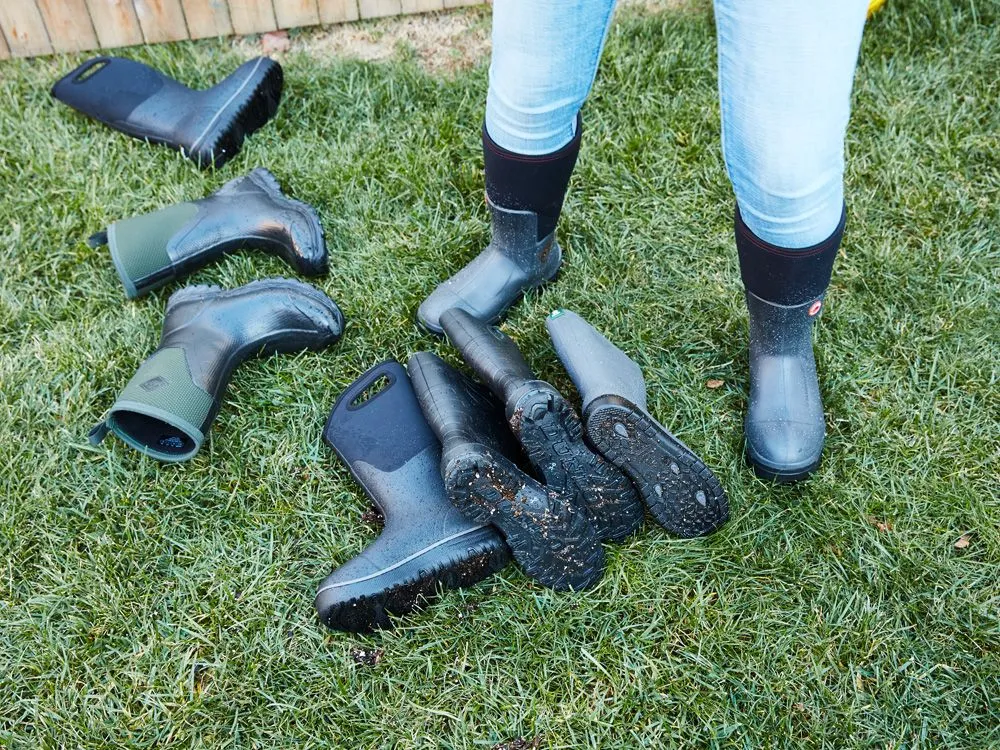When it comes to reliable footwear for wet and hazardous environments, rubber boots are an essential choice. Their waterproof construction, durability, and versatility make them suitable for a wide range of applications, from outdoor work to recreational activities. However, the effectiveness of rubber boots depends on their material, design, and suitability for different conditions. This article explores how waterproof properties vary across environments, the advantages of different rubber materials, and the impact of boot design on comfort and functionality.

Waterproof Performance of Rubber Boots in Different Environments
The primary reason many choose rubber boots is their superior waterproofing. However, not all utility rubber boots perform equally well in every environment. Understanding how different conditions affect waterproof efficiency helps in selecting the right pair.
For agricultural work, where prolonged exposure to wet soil and chemicals is common, rubber boots made from high-quality natural rubber provide excellent water resistance while remaining flexible. Their durability ensures protection in muddy fields and livestock areas.
In cold and icy environments, rubber fishing boots need insulation to prevent freezing temperatures from making the rubber stiff. Many high-end models feature neoprene linings or thermal insulation to keep feet warm, even in extreme weather conditions.
For industrial settings, synthetic rubber boots are often preferred due to their chemical resistance. Work environments such as factories, construction sites, and chemical plants require utility rubber boots that not only repel water but also resist oil, solvents, and hazardous substances.
Outdoor enthusiasts who frequently encounter heavy rain, rivers, or marshy terrain benefit from rubber boots with a seamless design, preventing any water seepage even in extreme conditions.
Natural Rubber vs. Synthetic Rubber: Which is Best?
The material of rubber boots plays a crucial role in their durability, flexibility, and overall performance. Understanding the differences between natural and synthetic rubber helps in making an informed decision.
Natural rubber, derived from latex, offers superior elasticity and durability. Rubber fishing boots made from natural rubber provide excellent waterproofing while maintaining flexibility, making them ideal for long hours of wear. They are also biodegradable, making them an environmentally friendly option.
On the other hand, synthetic rubber, such as PVC or nitrile rubber, provides enhanced resistance to chemicals and extreme temperatures. Industrial workers benefit from utility rubber boots made from synthetic rubber as they offer increased protection against oils, acids, and other hazardous materials. Additionally, synthetic rubber is often more affordable, making it a cost-effective choice for bulk purchases like rubber boots wholesale.
Despite their advantages, synthetic rubber boots can be less flexible and may not offer the same comfort as natural rubber. They can also become brittle over time when exposed to extreme weather conditions. Choosing between natural and synthetic rubber depends on the specific requirements of the wearer’s environment and usage needs.
How Design Affects Comfort and Functionality
The design of rubber boots directly impacts the wearer’s comfort and ease of movement. Features such as shaft height, sole structure, and internal linings all contribute to overall functionality.
Shaft height is a crucial factor when choosing rubber boots for different activities. Taller boots provide better protection in deep water, mud, or hazardous environments, making them ideal for fishing, farming, or industrial use. Shorter utility rubber boots offer greater mobility and are suitable for light outdoor work or casual rainy-day wear.
Sole construction affects grip and slip resistance. High-quality rubber boots feature deep treads that enhance traction on slippery surfaces, preventing accidents in wet or oily conditions. Rubber fishing boots often come with specially designed soles to provide maximum grip on boat decks, ensuring safety even on wet, unstable surfaces.
Internal linings also enhance comfort. Many modern rubber boots include moisture-wicking linings that help regulate temperature and prevent sweat buildup. Breathable linings are particularly important for individuals wearing utility rubber boots for extended periods, ensuring a comfortable fit throughout the day.
Adjustable closures, such as buckles or elastic gussets, allow for a customizable fit, ensuring the boots stay secure while preventing water from entering. For those purchasing rubber boots wholesale, offering a variety of designs ensures that customers can find the perfect fit for their specific needs.
The Best Choice for Durability and Performance
With their outstanding waterproof properties, durable material options, and well-thought-out designs, rubber boots continue to be the top choice for those working in wet and hazardous environments. Whether selecting rubber boots wholesale for retail or investing in utility rubber boots for personal use, choosing high-quality materials and innovative designs ensures long-lasting comfort and protection.
-
Stay Dry in Any Condition with WadersNouvellesJul.17,2025
-
Elite Performance with Camouflage Combat BootsNouvellesJul.17,2025
-
Dry and Comfortable with Green Rubber Garden ShoesNouvellesJul.17,2025
-
Convenient Protection with Foldable RainbootsNouvellesJul.17,2025
-
Comfort and Protection with Neoprene Work BootsNouvellesJul.17,2025
-
Brighten Rainy Days with Floral Rain BootsNouvellesJul.17,2025
-
Safety Wellies: The Ultimate Combination of Protection, Comfort, and VisibilityNouvellesJun.19,2025











